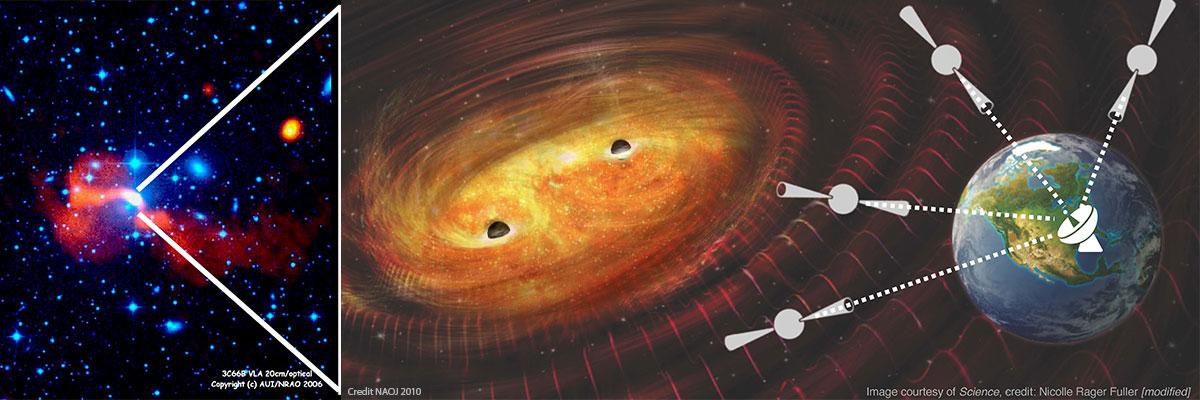
VLA image of 3C66B, with inset artists impression of the potential SMBHB, with resulting GWs heading towards the NANOGrav PTA. Figure: AUI/NRAO, NAOJ, and Science/Nicole Rager Fuller
When galaxies merge, the supermassive black holes that reside in those galaxies’ centers may form binaries. After inspiralling for millions of years, those supermassive pairs should eventually coalesce. During that inspiral process, they will emit some of the brightest gravitational waves in the universe. NANOGrav’s first multi-messenger search—that is, a search that uses both light and gravitational-wave information to seek a detection—was undertaken on the candidate binary supermassive black hole in galaxy 3C66B. Previous radio observations had led to the hypothesis that this galaxy contains a supermassive black hole binary. The apparent 1.05-year orbital period for the binary in 3C66B makes it an excellent candidate to analyze with pulsar timing arrays.
An earlier study of 3C66B with pulsar timing data ruled out initial binary models based on electromagnetic observations; those limits indicated that the proposed mass of the system was too big to be real. However, models of the source have since been revised, and concurrently, NANOGrav’s sensitivity and analysis techniques have improved dramatically. Harnessing these advances, we put tight new constraints on the chirp mass of the candidate supermassive black hole binary in 3C66B, limiting it to less than (1.65±0.02)×109 M⊙, using data from our 11-year data set.
In addition to this new limit, we test how gravitational wave constraints on a candidate binary are improved by incorporating data from electromagnetic observations of the source. With these new techniques, we have learned that searches for gravitational waves from binary candidates, like 3C66B, are insensitive to large uncertainties in the orbital period. This result is already shaping our approach to future binary candidate analyses.